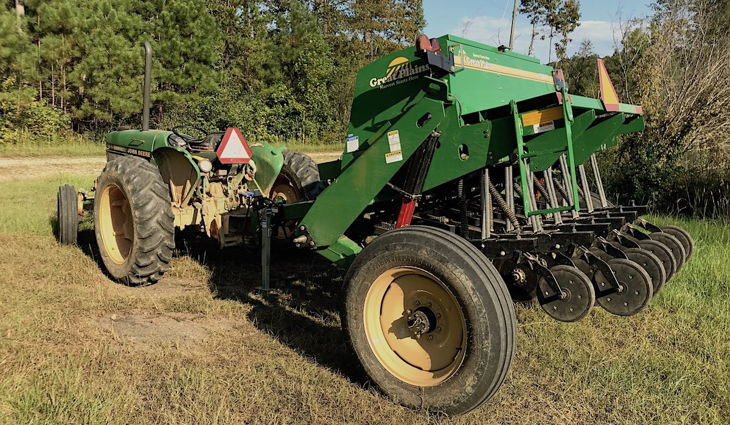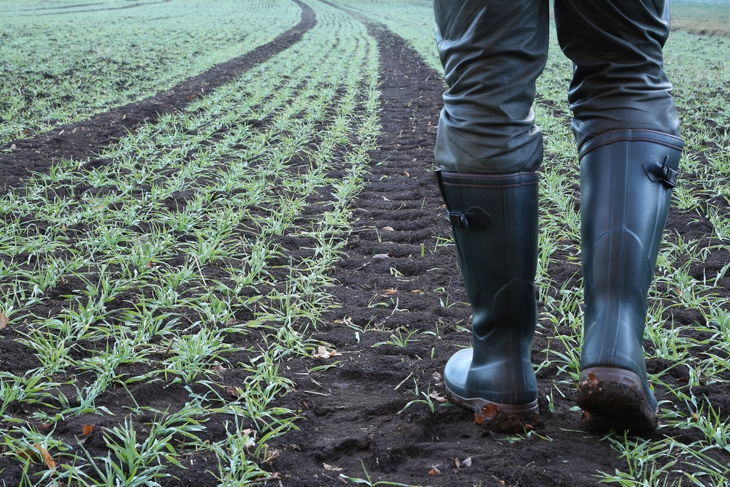If there was one thing that helped attract deer, it had to be food plots. These didn’t only have deer come near my area for hunting and viewing, but it helped them become healthier, too! It’s the reason why I started growing food plot, which held more benefits as a hunting strategy.
After a long time of growing food plots, I came across no-till farming, which seemed even easier to do to avoid too much work. To learn more about this and the best no-till drill for food plots, read on! I’ll show you more about how to do no-till farming.
Table of Contents
What Is No-Till Farming and Why’s It Great?
No-till farming is just how it sounds like, where you don’t use any till or equipment that disturbs the soil. There isn’t a need to use tools such as disks, plows, or chisels, which is what makes work less tedious. This planting method relies on natural processes for the breakdown, thanks to your previous crop!
While people think that no-till farming is difficult and risky, you can actually reap many benefits from it as long as you do it right. Here are some benefits hunters can reap from it:
- You reduce a lot of expenses, and not just financially! You won’t have to spend loads on equipment, fuel, time, money, and effort. All you need are your seeds or no-till drills and you’re good to go.
- There is improved soil structure, as tillage would disrupt it. That way, you have crops with the natural nutrients it needs to grow.
- Your soil has fewer chances of eroding because there is more residue on the land’s surface whenever there aren’t any crops growing. That way, topsoil, and nutrients stay as much as possible.
- The land experiences reduced soil compaction, which comes from heavy equipment.
Yes, it takes time to see its benefits, but the patience will be worth it. Plus, it still has similar benefits of using your previous crops and food plots for deer in time.
What’s the Best No-Till Drill For Food Plots?
Of course, you can’t diminish the use of equipment while planting. One of the necessities when doing this method is the best no-till drill for food plots, which are specialized equipment, a planter to place your seeds in the ground. It does this without disturbing the topsoil at all and can be used all on its own.

I won’t be naming brands, but I highly recommend that you look into these factors when selecting a proper no-till driller:
- The drill should be accurate and have the upright disc to cut through surface trash to save time and effort. This is best for dry surfaces.
- If you have soil that feels like heavy clay or black fen peat, then you’ll need a drill that has the strength to close the slots properly after adding the seeds (a more aggressive cutting disc). This prevents critters from going in your planted crops.
- For those with good soil conditions, you’ll want to focus more on drills with better trash and soil clearance.
However, these drills are quite expensive, with pricier and higher end ones ranging from $10,000 to $25,000! If you’re on a budget, then I would consider either purchasing a used one or renting one in your local area, which can save you money.
How to Go No-Till Farming
Now that you’re familiar with no-till farming and the drills to use, how can you start doing this? Here are the steps to follow when you plan on no-till farming for food plots:
- Begin your planting during the summer with Winter Rye.
- In the spring and when the rye is at least 15″ tall, spread your chosen crop seeds, about 70#s for every acre. You may need more seeds than recommended because of insects, sun exposure, as well as soil quality when doing so.
- Spray two quarts Glyphosate per acre after spreading the beans around the land. This helps with weed control and making sure that your growing crop will be healthy.
- After that, just wait until your food plot begins to grow and is ready for deer to consume!
Here’s a helpful video showing you how to plant a no till food plot:
Wrapping It Up
While no-till farming is a bit complicated to learn at first, you reap a lot of benefits out of it in the end. It’s easy to do and will have deer grow and develop healthily for hunting and viewing. Just make sure that you only use the best no-till drill for food plots!
I hope that this article on the best no-till drill for food plots helped you out. So don’t wait any longer and look into doing this today.
If you have any questions or want to share your tips and experiences with no-till farming, then comment below. Your thoughts are much appreciated!


Can I use the above-described no till method to even plant seed which normally requires a 1/2″ to 1″ planting depth? For example. grain sorghum, lab lab, cowpeas, etc. I assume this method will work quite well for various clover and other small seeds? Thank you.